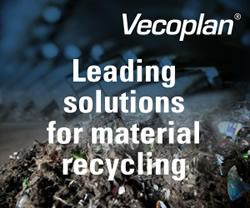The equipment's power requirements can be met by the fuel cell system for 17 to 19 days without being refueled, and that window could be pushed to 21 days if a storm prevented access during the normal refueling window.
CIC USA and ReliOn Provide a Reliable, Cost-Effective and Green Remote Off-Grid Power Solution
Sandra Saathoff | ReliOn, a Plug Power company
In the mountains of Pennsylvania, three miles from the nearest utility pole, stands a lonely tower. Its sole purpose is to provide line-of-sight communication for two microwave radio antenna, one to the east and one to the west. This tower is one of thirty-nine in a network stretching from the Midwest to the East Coast, responsible for providing critical communications necessary for ongoing business operations for the end user. A grid extension would have cost about $750,000.00, and had been deemed excessive. Bypassing this site would have meant re-designing and re-building the network so that, rather than extending in a straight line, it would have bowed out and around this site to other less desirable locations. This would have increased the number of sites needing construction and delayed implementation of the network by 9 to 12 months.

Communication Infrastructure Corporation (CIC), a single source provider for microwave point-to-point and point-to-multipoint radio networks, was retained to build the network. CIC has been working with ReliOn since 2013 to incorporate its hydrogen fuel cells as power solutions for critical communication sites.
Solution: Dual ReliOn E-200 fuel cell systems in an environmentally hardened cabinet with 108 kWh of runtime fuel storage. The fuel cell solution powers a microwave relay site with two microwave radios – one pointing west and the other east. The equipment’s power requirements can be met by the fuel cell system for 17 to 19 days without being refueled, and that window could be pushed to 21 days if a storm prevented access during the normal refueling window. The fuel cell system has been providing continuous power since April 3, 2014 and is scheduled to do so well into 2015. There isn’t much demand for grid power in the area, so there has been no rush to provide an extension. If the grid is extended, the fuel cell will be converted to backup power at the site.

Value to the network operator
Reliable. If any of the microwave sites goes down, the entire network is unable to communicate. This translates to lost business opportunities for the network operator. In other types of microwave networks, a loss of communication could impact public safety and first responder communications. The fuel cell solution in this network has been operational 24/7 since early April 2014 and has proven to be as reliable a source of power as the commercial utilities used elsewhere in the network. The fuel cell system has been 100% reliable thus far.
Quiet. Because this site is in the mountains, hunters, hikers and wildlife frequent the area. An operational combustion generator could attract unwanted attention to the site, potentially leading to injury, theft or vandalism. The fuel cell’s quiet operation not only helps to avoid these issues, but does not disrupt the wildlife in the area.
Cost-effective. The network operator can monitor the fuel cell system remotely, which means a person doesn’t have to visit the site simply to check on the system, thus reducing the operations budget. Fuel levels, general health of the system, and other key parameters can be viewed through a simple to use, password-protected web interface. The extended runtime of the fuel cell system reduces the number of refueling trips to the site when compared to a conventional generator, which also increases the cost-effectiveness of the solution.
Green. Because the fuel for the fuel cell system is simply pressurized hydrogen, the permitting process with the local jurisdiction was much easier, less expensive and faster than it would have been for a conventional generator using an external fuel tank. Hydrogen fuel cells have no emissions other than warm water vapor, thus eliminating the carbon footprint of a generator and contributing to the sustainability efforts of the network operator. Hydrogen is lighter than air, so it simply dissipates if a leak occurs. Finally, the absence of a liquid fuel tank, as is used with conventional generators, means there is no requirement for post-deployment site cleanup or remediation, since there is no possibility of any fuel having leeched into the ground. Cleanup costs are thus near-zero and the network operator avoids the risk of a fine (or a directive to cease operations) from environmental offices or agencies.
The content & opinions in this article are the author’s and do not necessarily represent the views of AltEnergyMag
Comments (0)
This post does not have any comments. Be the first to leave a comment below.
Featured Product

